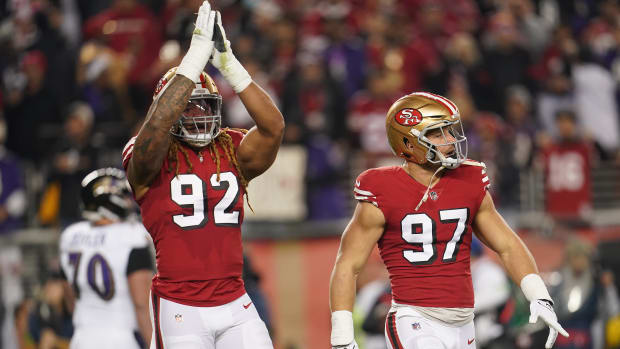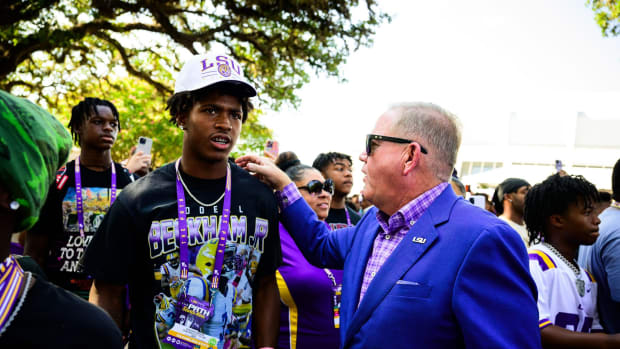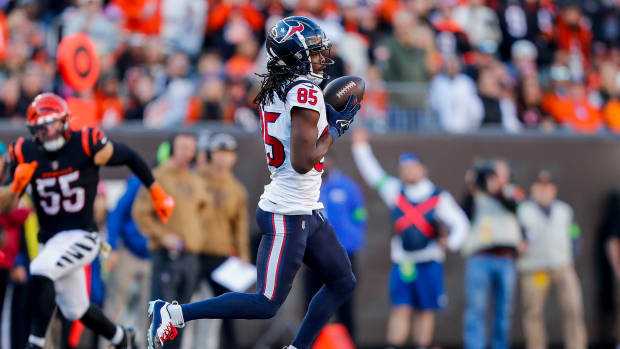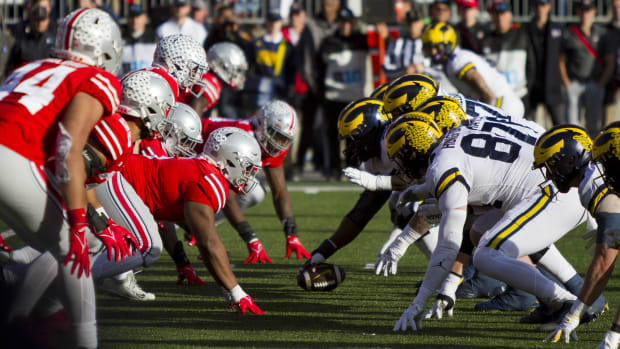If No Spring Football, Ohio State Suffers Least in East
Even with the loss of three consensus All-Americans a year early to the NFL, Ohio State is a runaway favorite to defend its unprecedented third straight outright Big Ten championship and a solid choice as a repeat participant in the College Football Playoff.
Everyone lucid enough to realize buying toilet paper isn't a defense against contracting COVID-19 realizes that.
But the Buckeyes, like every school, will be less-prepared in the fall than they otherwise would be if the Big Ten hadn't called a halt to spring practice until April 6.
And who among us really thinks -- with projections for the coronavirus outbreak estimated to peak in June or July -- that OSU or any other college football program will be cleared to practice the rest of this spring?
The likelier outcome is the NCAA allows teams to convene earlier than normal for practice in August, but if on-campus facilities remain closed throughout the summer, the impact in team development is inarguable.
That's how we'll rank which Big Ten East programs will be impacted most by the pause in business as usual.
Ohio State isn't going to be hurt so much by the holding pattern that it will cease to be the favorite in its division. But in terms of what the Buckeyes, or other B1G East rivals could be had the conventional spring practice calendar prevailed, who gets hurt the most?
1. Rutgers -- The Scarlet Knights hadn't begun spring practice yet, so new/former coach Greg Schiano hasn't had the chance to ingrain anything on the field. Sure, Schiano has done what he could since taking over in January to ingrain his culture, but only so much of that can be accomplished in a training facility and weight program. The real work gets done on the field.
Schiano has added some transfers who will help bring more of a winner's attitude -- most notably, 2020 Rose Bowl MVP Brendan White from Ohio State -- but he's also lost 33-game starter at center Michael Maietti and wide receiver Mohammad Jabbie via grad transfer.
Hence Rutgers will not be close to what it could have been because of the COVID-19 impact.
2. Michigan -- Jim Harbaugh enters his sixth season and will be starting a quarterback he recruited for the first time. That's a bet you could have won a lot of money on when Harbaugh was hired in 2015. He went with Iowa transfer Jake Rudock that year, Wilton Speight, a Brady Hoke recruit, the next year, Houston transfer John O'Korn after that and Ole Miss transfer Shea Patterson each of the last two seasons.
Finally, Harbaugh will rely on someone he recruited and has groomed. We don't know if it will be Joe Milton or Dylan McCaffrey, and pulling the plug on spring practice won't bring any clarity to battle or help the eventual winner deal with the loss or receivers Donovan Peoples-Jones to the NFL or Tarik Black via the Transfer Portal.
3. Maryland -- Year Two can't be worse for head coach Mike Locksley than Year One, if only because of the additional distance from the firing of D.J. Durkin in the aftermath of offensive lineman Jordan McNair's death during summer conditioning.
The Terps, though, are a ways away from the supposed recruiting impact Locksley can make manifesting itself on the field. That takes time and practice, something the team won't have because of the COVID-19-related precautions.
4. Michigan State -- It's not that the delay in and perhaps cancellation of spring ball won't impact MSU. It's just that Rutgers, Michigan and Maryland will be hurt worse in their respective development than the Spartans.
Yes, even with new coach Mel Tucker taking over and bringing a new staff to Lansing. Sure, MSU won't be in the fall what it could have been, but the huge increase in energy and enthusiam Tucker brings from the flat-line Mark Dantonio era is enough to invigorate the Spartans and keep them in the middle of the B1G East in terms of COVID-19 impact.
5. Indiana -- The Hoosiers are set at quarterback with sophomore Michael Penix and return the highest percentage of impact production (passing yards, touchdowns scored, passes defensed) of any team in the league.
Tom Allen has recruited well -- by Indiana standards -- and is armed with a long-term contract extension. Enthusiasm in the program has rarely been higher over the last two decades. That should keep the Hoosiers primed to be fairly close to what they would have been without COVID-19 precautions intruding on their development.
6. Penn State -- The Lions have four offensive line starters back, quarterback Shaun Clifford back and a stocked offensive backfield. The cancellation of the Blue and White game will preclude early-enrollees Joseph Johnson (CB) and Theo Johnson (TE) from being as prepared for fall, but both will still be positioned to lend support thanks to a friendly September schedule that brings Kent State and San Jose State to University Park.
7. Ohio State -- OSU would rank lower on this list if not for quarterback. Justin Fields is back and a likely Heisman Trophy return finalist. Oregon, which plays OSU in Week Two, won't have spring practice to sort out its successor to Justin Herbert. That keeps the impact of COVID-19 to a minimum for head coach Ryan Day.
Of course, the secondary is a concern with three starters lost, most notably All-American junior Jeff Okudah. And, the running back position is in flux sith Master Teague hurt in the first spring practice session and J.K. Dobbins off to the NFL.
But Fields can add a change-of-pace running threat with his athleticism and he'll have Chris Olave and Garrett Wilson to throw to while a host of early-enrollee wideouts develop under receivers coach Brian Hartline.
For the latest on Ohio State follow Sports Illustrated Buckeye Maven on Facebook and @BuckeyeMaven on Twitter.




